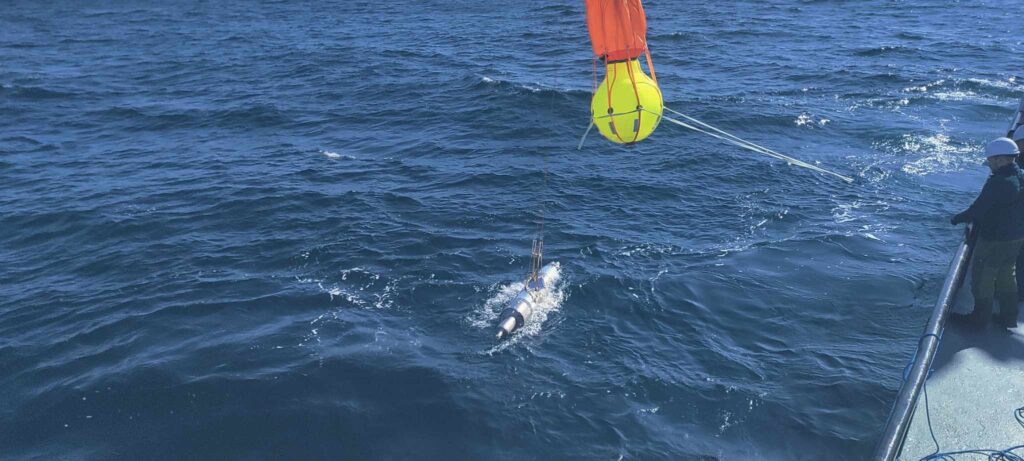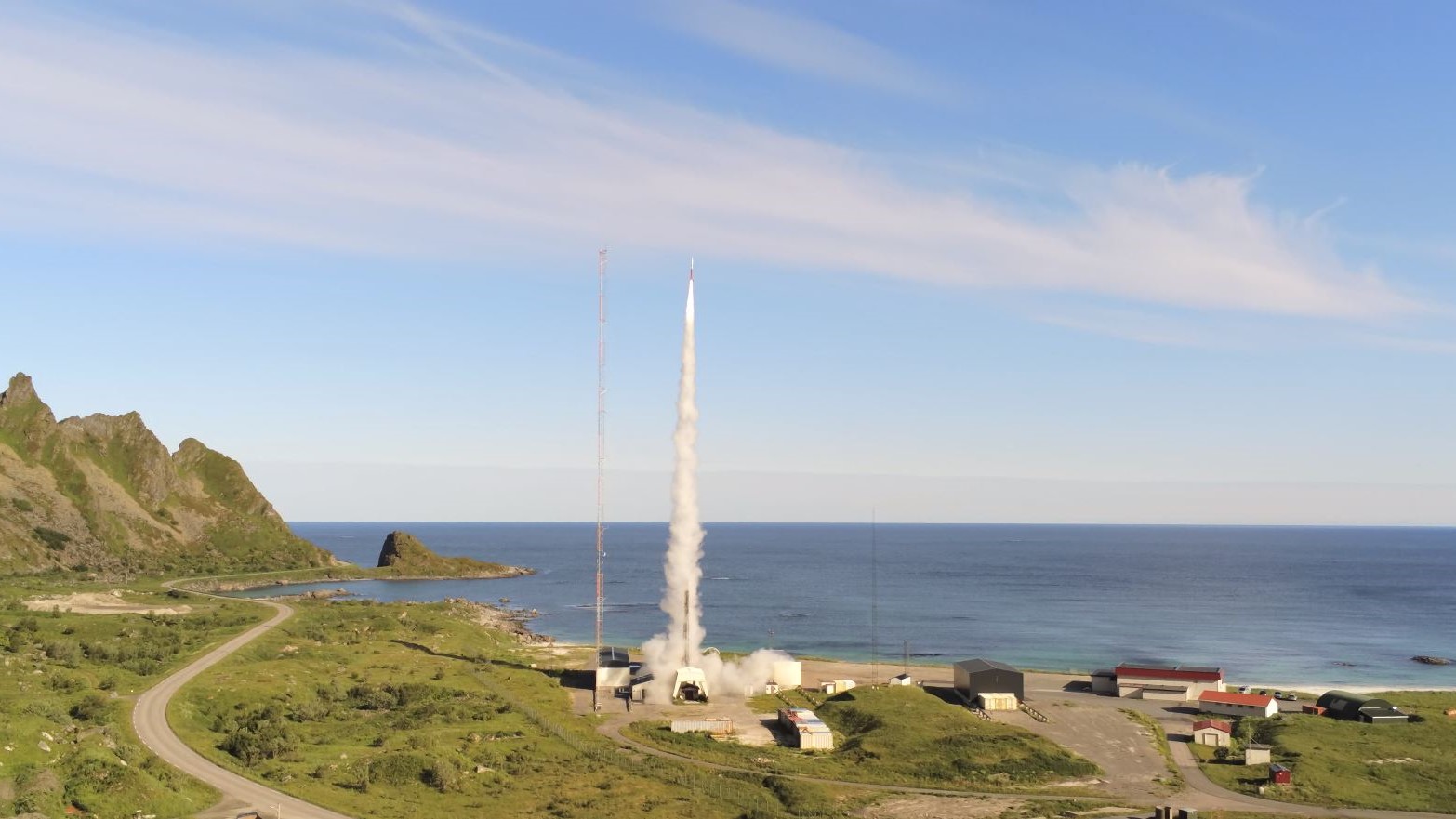The Norwegian research rocket MaxiDusty-2 has completed a successful mission from Andøya.
The MaxiDusty mission is led by UiT The Arctic University of Norway (UiT), which has constructed several advanced experiments and instruments on board the research rocket and is joined by researchers from the University of Oslo (UiO), the Institute of Atmospheric Physics (IAP) in Germany and the Meteorological Institute at the University of Stockholm (MISU). Andøya Space has built what was needed for the experiments to work during the flight, and DLR Moraba has supplied the rocket engine with parachute and flotation devices.
Successful mission
On July 5th, 2025, at 08:00 local time, the scientific rocket took off from a launch pad in Oksebåsen and carried out a successful mission. After flying up to the mesosphere, the rocket landed in the sea with the help of a parachute and was picked up by a waiting boat. The top altitude of the scientific rocket was 125 kilometers.
“I am incredibly proud of my team and the collaboration with UiT. Together, we made this work completely smoothly,” says Kolbjørn Blix, head of Andøya Space Sub-Orbital. “We have now managed to bring down dust and particles from the upper part of the atmosphere.”
The dust particles in the mesosphere often bind to water particles which then freeze into ice and eventually form large ice clouds, known as noctilucent clouds.
“It will be very interesting to see what the researchers at UiT manage to find out from the samples that have now been collected,” says Blix.
The area where the dust particles were located is too high up for planes and balloons, but at the same time too low for satellites.
“I would like to thank UiT The Arctic University of Norway for the assignment. It stands as proof that also Norway is far ahead on the research front, and capable of carrying out very complicated research campaigns,” Blix concludes enthusiastically.

Funded through ESA-PRODEX
“Maxidusty-2 has been carried out as part of the Esrange and Andøya Special Project (EASP) agreement. The agreement is between the five countries: Norway, Sweden, Germany, France and Switzerland,” says Pål Brekke from the Norwegian Space Agency, who is also chairman of ESA’s program committee for sounding rocket activities, which oversees the EASP agreement.
The Norwegian Space Agency has funded Maxidusty-2 with more than NOK 18 million through the PRODEX programme of the European Space Agency (ESA).
“Norway’s participation in ESA provides great opportunities for Norwegian research institutions and the Norwegian space industry,” continues Brekke, who is also chairman of ESA’s Prodex programme committee. “The Prodex programme has proven to be very useful for Norwegian research communities and Norwegian researchers’ opportunities to participate in the scientific planning of space projects, they get access to the best of observations, and it gives Norwegian industry the opportunity to participate in groundbreaking technology development.”
The launch was broadcast live on Andøya Space’s YouTube channel, and can be seen in its entirety here: https://www.youtube.com/watch?v=dWDRQDbPnMg

